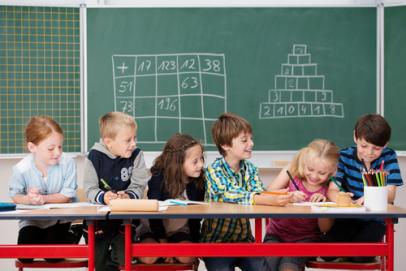 By: Elizabeth Kelsey, Kendall Hunt RPD Intern
By: Elizabeth Kelsey, Kendall Hunt RPD Intern
Do you group students by ability level, placing the high achievers with their dedicated peers? Or do you strategically split up those high achievers, hoping their motivation will inspire the less enthusiastic learners?
The first option is homogeneous grouping, also known somewhat infamously as ability grouping. Lately, it’s caught a lot of flak from educators who say that it can reinforce negative student self-conceptions and doesn’t always improve the quality of education.
No matter if you name your homogeneous reading groups by number, color, animal, or sports team, students know who’s on top. Their position shapes their permanent self-image as a reader, because once grouped, students usually remain at the same level throughout their entire educational career. This reinforces a fixed mindset, says educator Sharon Cromwell, and not only do student attitudes decline, but “test scores do not improve in the lower-ability group.” It’s the classic self-fulfilling prophecy: those in the lowest group feel that their teacher doesn’t believe in their abilities, and they live down to those non-expectations.
But is the second option—heterogeneous grouping—really the silver bullet?
Heterogeneous groups give struggling learners a model other than a teacher. Sometimes, hearing a concept explained by a peer can make more sense—or students are just more willing to listen and believe their peers, who speak from more recent learning experience. Not only can higher-level learners model strategies for solving problems, said a teacher quoted by Cromwell, they can also model excitement and enthusiasm for learning. Heterogeneous grouping also exposes students to high-level content that they might not experience if tracked into a lower level.
The problem? You’ll notice that most of those benefits fall to the struggling learners, not the higher-level ones. The peer-to-peer relationship can quickly become a student-tutor situation.
True, the more proficient learners develop heightened leadership qualities as they teach their peers. In our Pathways 2.0 program, we encourage heterogeneous grouping for partner reading activities for just this reason. And yes, teaching others is a great way to review and better understand the material yourself. So there are some perks for the stereotypical “smart kid” in a heterogeneous group.
But in terms of actually learning new content and benefiting from a developmentally appropriate group discussion? In heterogeneous groups, say some educators, higher-level students are robbed of that opportunity. Worse, says educator Ben Johnson, “students are smart and can easily figure out what we’re really doing. [They] know when they are being grouped to mainly tutor and remediate less capable students and … most of the time they resent it.”
In Johnson’s experience, heterogeneous grouping often led to social loafing, not because struggling students necessarily were lazy, but because they were receiving the following message when he placed them in heterogeneous groups: He wants me to just sit here and listen to the smart kid he put in the group. He doesn’t really want me to contribute; he put me with [insert name here] so they could teach me. When Johnson grouped homogeneously, he said, students who typically took a backseat when paired with “smart” peers became more engaged.
The verdict? Like everything in the education world, there’s room for both options. A teacher interviewed by Cromwell advises sticking to homogeneous grouping in math, but says that in language arts, heterogeneous is possible. Even in math, however, calls have arisen for “detracking,” in hopes of eliminating fixed mindsets that might occur if students are placed in a lower group.
In the end, teachers need to have pedagogically sound rationales for whichever option they choose. Johnson perhaps puts it most succinctly:
“If the purpose of the group learning activity is to help struggling students, the research shows that heterogeneous groups may help most. On the other hand, if the purpose is to encourage medium ability groups to learn at high levels, homogeneous grouping would be better.”
And, as Johnson says, students are smart. So whatever your rationale is, don’t try to fool them … because they will figure you out, and your trick for engaging them with group work might backfire.
What has been your experience with, and your students' responses to, homogeneous and heterogeneous grouping?
Sources:
https://www.edutopia.org/blog/student-grouping-homogeneous-heterogeneous-ben-johnson
https://www.ericdigests.org/1994/reading.htm
https://www.educationworld.com/a_issues/issues046.shtml